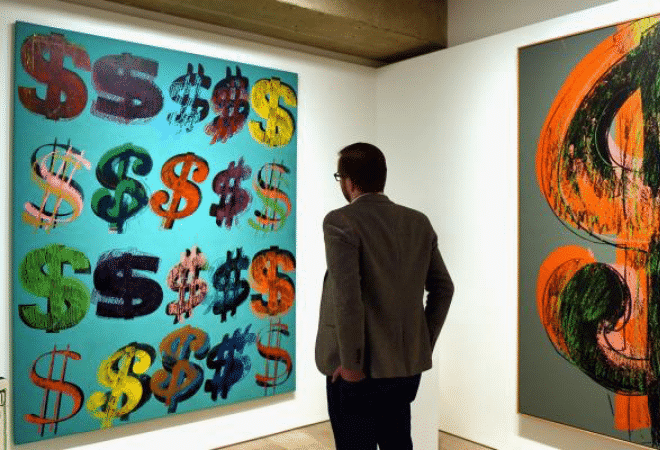You could be thinking: “My pricing tactics have shown results, therefore they work.”, and you may be right. Although, there is a crucial factor in business that could easily be overlooked. We are, of course, talking about — area for improvement. No matter how successful, no business model is entirely bulletproof and has certain moments in which it can fail. That moment is a part of every enterprise and is accounted for such failures, but for a good business owner who knows how to make these moments as rare and harmless as possible.
The solution comes in the form of self-regulations towards your strategy by moderating your marketing and competitive pricing to achieve profit. To achieve good results in this area, we need first to understand:
Customer Value
Your most valuable asset is, in fact, the customer, the art buyer, as they are the only ones that bring you financial reward. To understand how to organize your art pricing, you need to know how the customer thinks, and that is not as simple as it might sound. A widespread saying goes: “The lower the price — the happier the customer,” which does make sense in broad strokes but is also not entirely correct for art business. Depending on the artistic presentation, a respectfully higher price could result in more outstanding sales and a more significant profit.
An incredibly relevant factor in the way your art buyer thinks is how your peer artists and competitors (such as gallerists and dealers) are treating them. Is your competition offering the same service for a lower price? Do your customers see that as a good alternative or a cheaper runner-up? These are the questions you want to be asking yourself and the answers you want to find.
To successfully compete with your market rivals, you should try to keep your prices more dynamic. To do so, you — once again — need to observe potential art buyers and how they act. Are they looking for a new idea or different artistic trends? Maybe it’s time to check them out and introduce some new elements to your own art. Is the demand high for those new styles and mediums? The price should follow that dynamic. Most answers to those difficult questions can be found by observing who your art buyers are and finding out their tastes and demands.
To close the tale of the art buyer, your customer, we’ll mention one more thing, and that is loyalty. How do you achieve customer loyalty? The answer is simple as a concept, but it requires a particular flavor of nuance in practice. To accomplish the liking of your customers, you need to achieve a small number of complex objectives.

- Artistic product (artwork) and service quality: No one is bringing the quality of your art products and services into question, but it’s one of the most relevant factors, as a customer is more likely to come back and purchase more if their original experience was positive. Keep it consistent, and make sure to treat every project with equal care and respect, and you will have your customer’s respect and loyalty.
- Customer service: If a customer feels like you care about them as an individual, this dramatically increases the amount of respect they have towards your art business as a whole. Therefore, when communicating with the customer, your art buyer, you need to be polite and pay special attention to their requests.
- Availability and demand: Make sure to keep up with the market trends at all times, as you should always be able to match the market price to your own. Additionally, a good artwork (product) is one that sells; an excellent product is one that sells multiple times. If you have an online shop that sells other related merchandise with or inspired by your art, make sure that the customer knows you are well stocked and can get your other products if they want them too.
Strategic Pricing
Now that we understand what your customers are looking for, it’s time to apply that through some tactical pricing decisions. Suppose that the demand for your artwork is high — which is good as it means there is a market for it — but unfortunately, in most cases, it also means that you will be facing a significant number of peer artists and competitors at the same time. Luckily there is a simple and profitable pricing tactic to go right through your opponents, called aptly “penetration pricing.”
The penetration pricing strategy is a simple yet effective method of being seen in a pool of other artworks. By initially setting a low price for your artwork, you turn a small profit, but just good enough as your work would be easily seen among the much higher costs of your competitor’s offers. This price should be regulated not to create doubt in your clientele, and not to make them think your artwork somehow lacks in comparison. To be sure that doesn’t happen; we need to understand psychological pricing.
In psychological pricing, the most relevant aspect is perspective, to see and think in the way our customer does. Using a slightly regulated price, we can achieve a great result; for instance, changing a price from $100.00 for just 1 cent to $99.99 makes it look much lower. Also, discounting a high price makes an artwork seem more affordable.
Setting an initial high price for your artwork is another strategy called price skimming, where we aim for high earnings off the bat. Starting with a high cost indicates the higher quality of your artwork. Another significant benefit of this is the discount tactic. Creating a discount on a high priced item makes for an excellent deal for your art buyers and a fantastic profit for you. This technique is, in fact, a combination of price skimming and psychological pricing that shows excellent potential.

Pricing Your Art
Today, most people are doing business online, so let us share the leading example for online sales. One of the most profitable areas for online businesses is, obviously, digital products. For example — using virtually no resources besides time and tools, digital art technically has a never-ending sales volume, no constraints for physical supply chains, and no additional investments after the initial ones. With the right presentation, good products, and a carefully planned pricing strategy, it will take you no time to get through in the world of digital sales.
When selling online, the most popular pricing model is setting up different tiers of service that your customer will get for different prices for each tier. Your customer wants you to paint a portrait and needs nothing else? That would be the “lowest” tier, and let’s say you’d price it at $190.99 per art piece. But now you have a customer who wants a bust painting? It takes more time to create and more materials you are using, for example, watercolor. Therefore, you make a new “medium” tier and price it at $390.99. Then somebody comes along and asks for a custom request of a person in a complicated outfit and an unusual pose, with a full background? All of that would take more time and effort, as well as more materials — so you create a new tier that you may call “custom” and price it entirely according to your customer’s requests, and then present that as a premium tier to the market.
However, the prices we have chosen to employ in this article are not based on and do not reflect today’s art market. Pricing is a tricky thing to determine, as everything is at least a little established on perceived value. That makes it quite challenging to differentiate how much different elements of our art product cost. A smart way to reach a satisfying conclusion that would bring handsome revenue is having a value proposition. This is a process in which we answer the question, “Why would anyone buy this artwork/product?” Upon reaching the answer, we could get a relative starting point in setting a valid price.
The Right Price
After considering all the elements of the right price for your art, you are ready to enter the great battle, which is competitive pricing. Regardless if you are a single artist studio or a big art business owner, such as a gallery or art dealer, these tips should help you achieve a greater profit and a better profit margin. Use them to create premium options or gain an overall price increase until you reach the ideal elasticity that makes a profit and brings in new art buying customers.
Additionally, keeping prices consistent over time will ensure customer loyalty, as they will know what to expect when doing business with you. However, setting them a bit lower or higher due to a competitive pricing strategy is completely fine, as long as it does not deviate too much from the original plan.
Set your art prices right — and the world is your playground.



![[Left] Kusama with her piece Dots Obsession, 2012, via AWARE, [Right] Yayoi Kusama (Courtesy Whitney Museum of American Art) | Source: thecollector.com](https://www.artdex.com/wp-content/uploads/2024/04/Left-Kusama-with-her-piece-Dots-Obsession-2012-via-AWARE-Right-Yayoi-Kusama-Courtesy-Whitney-Museum-of-American-Art-Source-thecollector.com--300x172.png)



